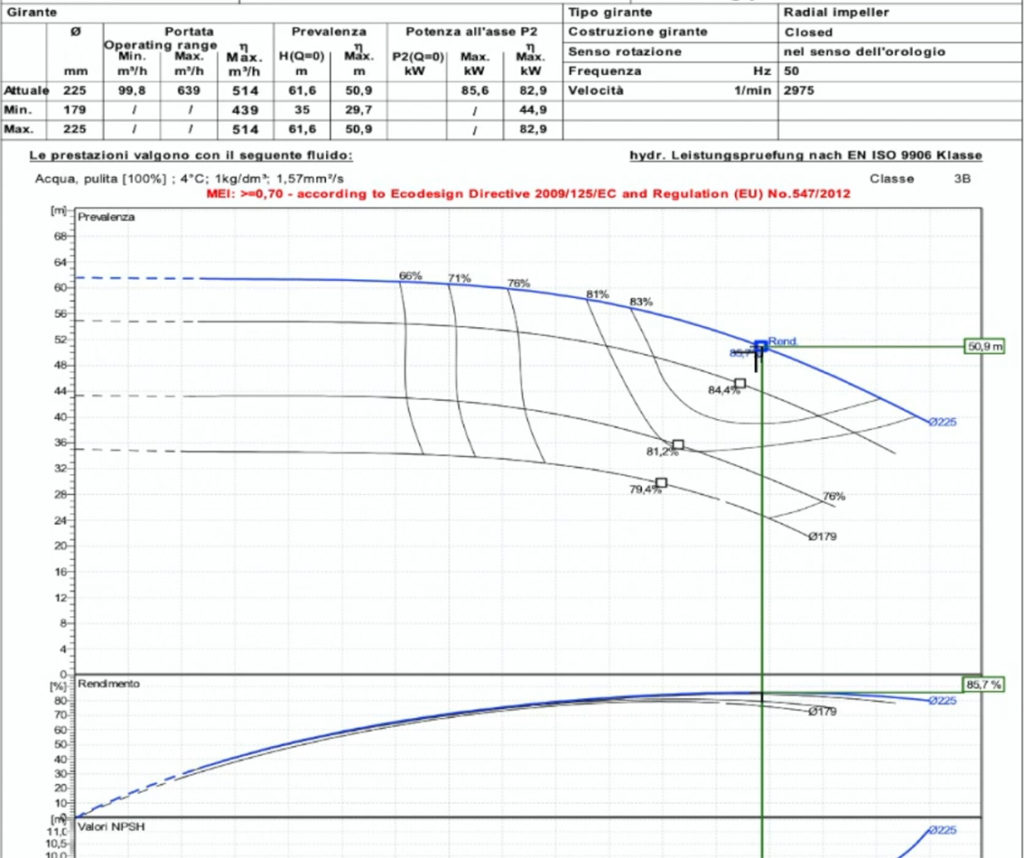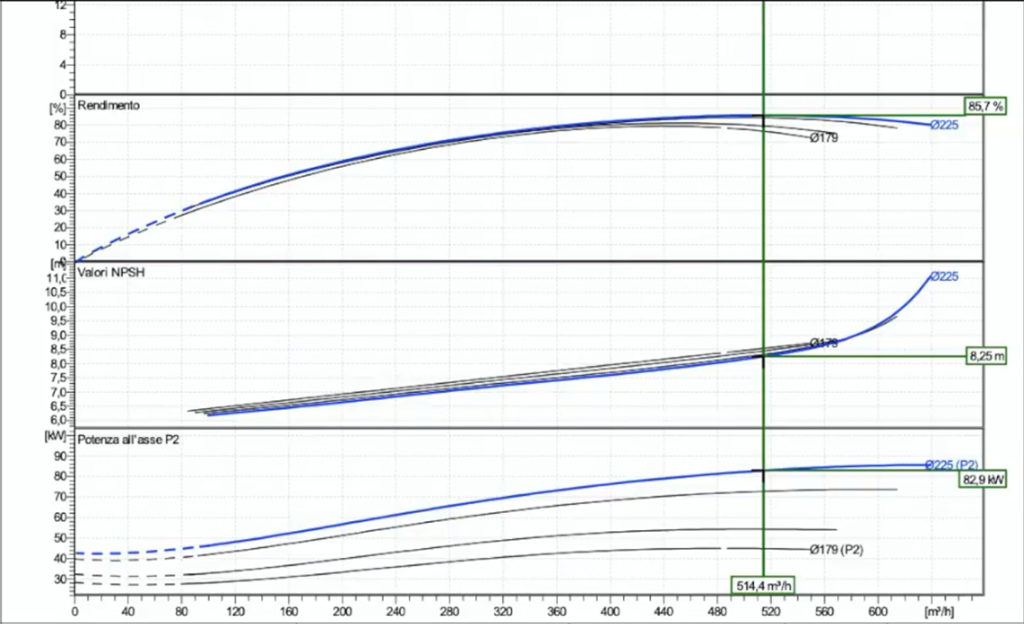Back on track with our Tempco tutorial video series in this new year, let’s talk about fluid motion, being it water, oil or other kind of fluids. In particular let’s talk about how a centrifugal pump works.
A centrifugal pump is a hydraulic machine in shape of a rotative pump, that can be directly coupled with an electric motor or via a joint. As it often happens, Tempco customers ask how centrifugal pumps should work in order to operate properly ‘in range’.
If we look at a common functioning curve of a centrifugal pump, flow rate and pressure values happen to be inversely proportional: when flow rate is at its maximum the pressure is minimum, viceversa maximum pressure corresponds with minimum flow rate.
With the outlet of the pump completely closed, with water delivery off, we’ll thus have maximum pressure value. Customers often contact us telling the pump is undergoing a huge effort while pushing water at a high pressure. If we take a look at the electric power absorption curve of the motor, we’ll see that the power input of the electric motor is inversely proportional to the pressure value generated by the pump.
Otherwise, a maximum pressure value is combined with minimum power consumption of the electric motor, which instead goes maximum when the pressure is at its minimum.
The reason relies upon the mechanical functioning of a centrifugal pump, which moves the maximum flow rate when the pressure is at its minimum, pushing high weights of fluid putting the electric motor under big efforts, meaning high power consumption.
To make an empirical example, the same happens when we try to move a huge weight for a short space distance, it takes a very big effort.
The consequence is that in case the decrease of pressure gets no limitations, letting the pump operating without pressure charge, the pump will exceed its operating range, triggering the intervention of the thermal protection of the electric motor.
Pumps have indeed a limit toward upper pressures, since they cannot exceed a certain maximum pressure, but on the other side they can push flow rates much higher than the design value of the electric motor, setting the motor in out of range stress, that causes the intervention of the thermal protection to avoid the burn out of the motor itself.
To avoid this issues, in our plants we usually put a gate valve on water delivery, which increases the pressure while closing it, making the pump operate back in the correct range, with proper design flow rates, thus ensuring that the motor won’t absorb power in excess.


